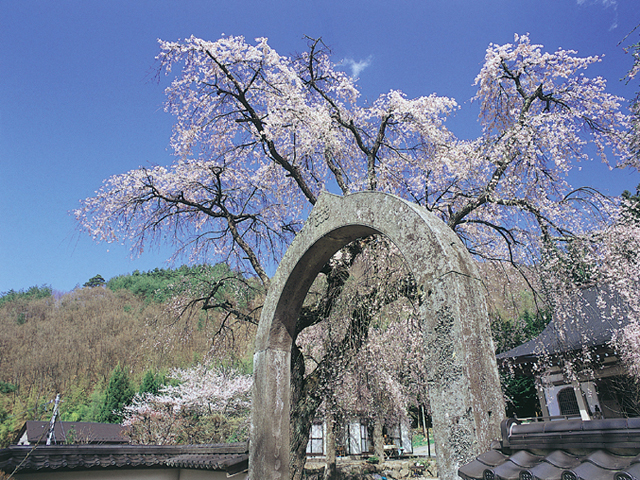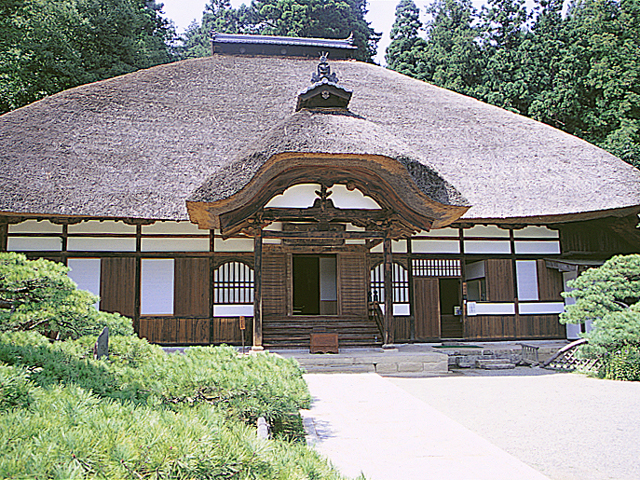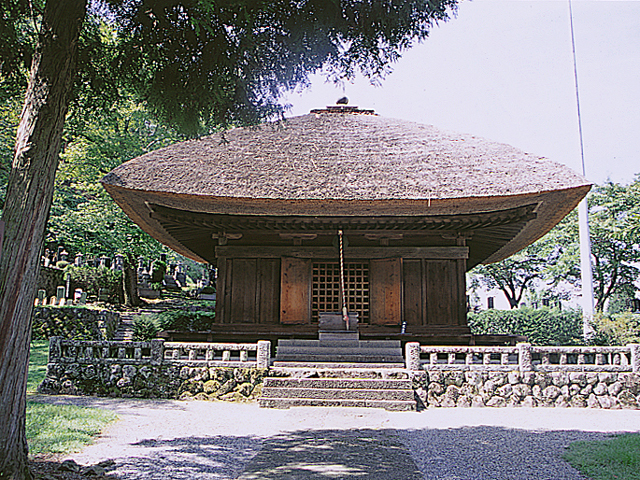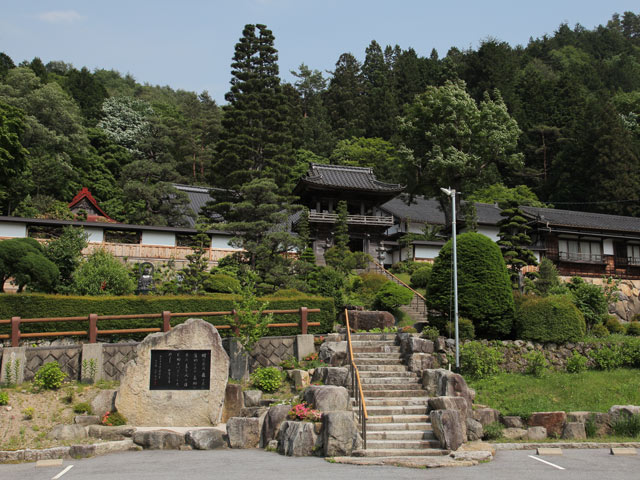
Hasedera Temple
天文16年(1547)、真田幸隆[ゆきたか]が開いた寺。その後昌幸[まさゆき]によって整備され、真田氏の菩提所となった。参道入口にそびえ立つアーチ型の大きな石門が有名。境内には幸隆夫妻と昌幸の墓がある。春のシダレザクラも見事。
Info
Business Hours
Price
Spot Category

茅葺き屋根の本堂
The information provided reflects the details available at the time of the survey.
Please note that facility details may change due to the facility’s circumstances, so please check for the latest information before visiting.
This content has been translated using machine translation.
Information provided by: JTB Publishing
The content uses an automatic translation service, which is not always accurate.
The translated content may be different from the original meaning, so please understand and use it.

天文16年(1547)、真田幸隆[ゆきたか]が開いた寺。その後昌幸[まさゆき]によって整備され、真田氏の菩提所となった。参道入口にそびえ立つアーチ型の大きな石門が有名。境内には幸隆夫妻と昌幸の墓がある。春のシダレザクラも見事。

茅葺き屋根の中禅寺薬師堂は、鎌倉時代初期に建てられた歴史ある建築物。堂内には、薬師如来座像(重要文化財)と手なし神将像が安置されている。薬師如来座像は鎌倉初期の作と伝えられ、穏やかで整った優美な仏像として有名だ。

吉川英治の『新平家物語』にも登場する大湯は、別所温泉共同浴場(外湯)のひとつ。建物は温泉街の一角に立つ3層の瓦屋根の趣があるもの。かつては木曽義仲が愛妾・葵の前と療養に来たことから「葵の湯」、後に北条義政が浴室を建てたことから「北条湯」とも呼ばれた。現在は湯量の多さから「大湯」と改められている。浴場に引かれている単純硫黄泉の温泉は自然湧出する大湯源泉。神経痛や関節痛によく、肌も滑らかに。露天風呂もあり、玄関前に立つ「葵の湯」の石碑は飲泉場となっており、飲泉ができる。

An ancient temple of the Rinzai sect, located on a high ground overlooking the townscape. Kaesan was in the year of Meiyo 9 (1500). In Kyoho 10 (1725), the main hall, which was erected by the Hayashi family, includes the Uguisu-tsuku corridor, the Yamaoka Tetsushu flat-profile, and the Owari Tokugawa family's basket. The back of the back [kuri] next to the main hall houses a basket with a car devised by the priest in the Tenpo years. In the shrine under the entrance stone steps, Enmei Jizo, which is said to save women, is celebrated. As the festival approaches in April, the stone gets wet at night due to the temperature difference between day and night. The Honson Yakushi Nyorai was by a Buddhist master, Kiyama, of Gyeongsang 4 (1599). Chubu 49 Yakushi No. 21.

The ancient temple of the Rinzai Myoshin-ji school, which is lined with the main temple and the Jōō-dō and the bell-roomon. It is said to be about 700 years ago, but was rebuilt in Kyoho 11 (1726) after it was destroyed by fire. The gardens are well-maintained, and the flowers of the four seasons add color. The main hall was rebuilt in 2018 for aging.

Natural wood of cypress and cedar thrives on the grounds. The four shrines (important cultural property) of Kumano, Izu, Hakusan, and Zao, which are about 1m away from the side where the bills of the first year of Kenbu (1334) remain inside the Okiya in Ishigaki (Oiya). All of them are considered to be the oldest Kamakura architecture in Nagano Prefecture, which is characterized by the roof of Ichikensha style cypress skin. The entrance with the inscription of 1439 was left behind, indicating that it was the center of the culture of Kiso Valley.
This website uses cookies so that we can provide you with the best user experience possible. Cookie information is stored in your browser and performs functions such as recognising you when you return to our website and helping our team to understand which sections of the website you find most interesting and useful.
Strictly Necessary Cookie should be enabled at all times so that we can save your preferences for cookie settings.
If you disable this cookie, we will not be able to save your preferences. This means that every time you visit this website you will need to enable or disable cookies again.
